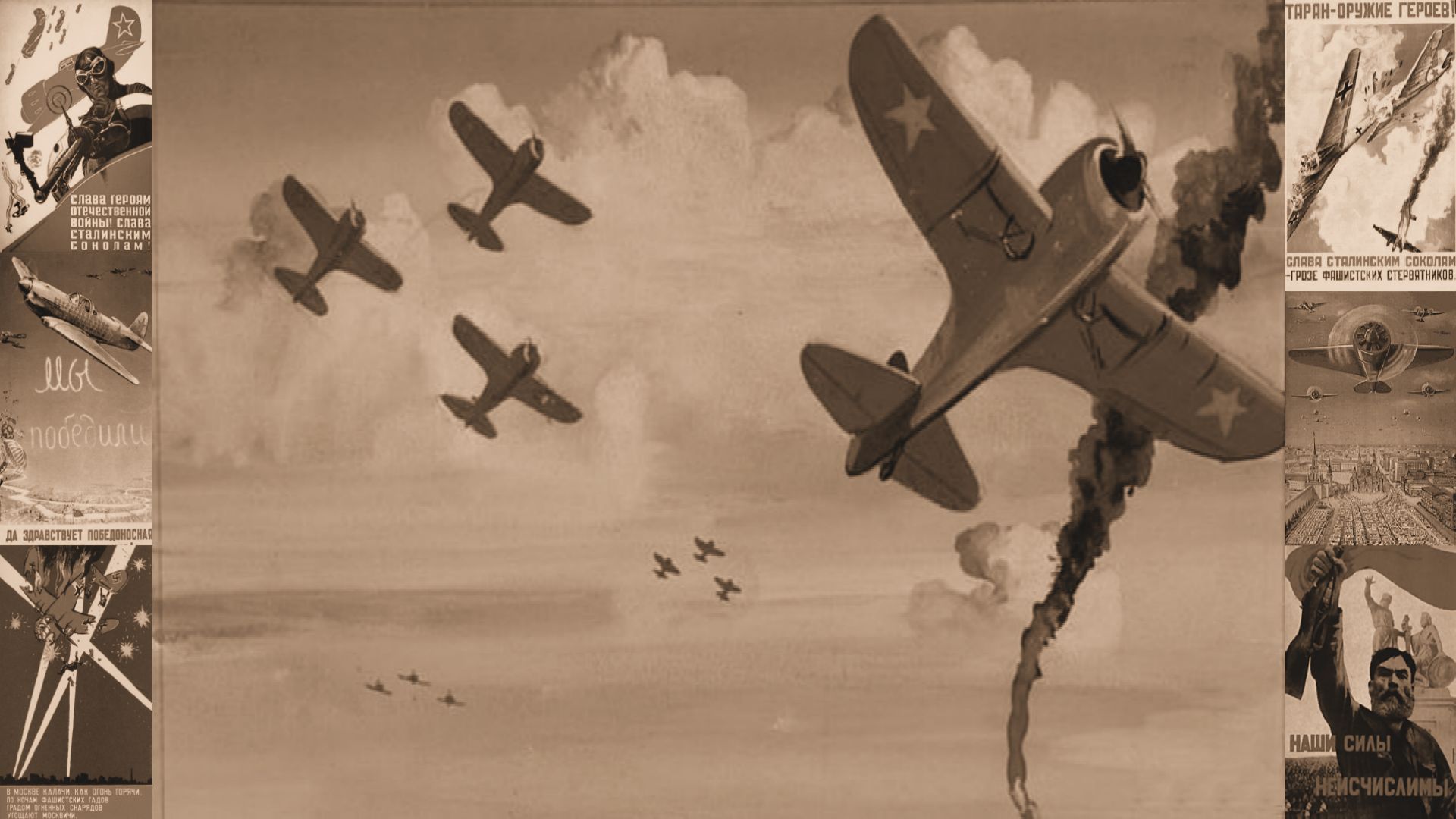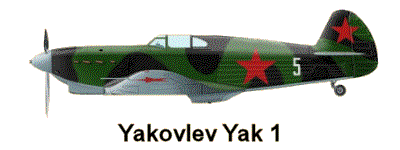The Yak-1 was extremely manoeuvrable, fast and well armed, and, just as importantly, it was easy to maintain and reliable. It formed an excellent basis for subsequent developments from the Yakovlev bureau. In fact it was the founder of a family of aircraft, with some 37,000 being built. It was the first combat aircraft designed by Alexander Yakovlev's construction bureau and was produced from 1940 to 1944, with a total of 8,700 aircraft built.
Development
The design prototype, the I-26, suffered technical issues with subassemblies provided by different suppliers raised the I-26-2's weight 400 kg (882 lb) above projected figures, which restricted the airframe to only 4.4 G while overheating oil was still a problem. The many defects caused I-26-2 to fail government testing in 1940. Fortunately for Yakovlev, its competitors I-200 (future Mikoyan-Gurevich MiG-3) and I-301 (future LaGG-3) also failed testing. Requested improvements were incorporated into I-26-3 which was delivered for testing on 13 October 1940. Although it passed on 9 December 1940, the aircraft was still very much unfinished with unresolved engine problems. Troublesome and slow testing and development must have been quite worrisome for Soviet officials considering the fact that the I-26 was ordered into production under the name 'Yak-1' on 19 February 1940, a mere month after I-26-1 made its maiden flight. Further development led to the Yak-7, then on to the Yak-9 which became the most prolific fighter in the Soviet Air Force. The Yak-9 fighter was first a production version of the lightened Yak-7DI, taking full advantage of the combat experience with its predecessor. Greater availability of duralumin allowed for lighter construction which in turn permitted a number of modifications to the basic design. The Yak-9 carried two different wings, five different engines, six different fuel tank combinations and seven types of armament configurations. In December 1943, it became possible to install the more powerful M-107 engine on a new Yak-9U airframe: the engine mounting was new with individual faired exhaust pipes; fuselage structure and wings were made of metal and the whole aircraft was covered with a Bakelite skin.
Back to Top
Yak-1
At the onset of Great Patriotic War on 22 June 1941, 425 Yak-1 were built, although many of these were en route or still disassembled. Just 92 machines were fully operational in the Western Military Districts, but most were lost in the very first days of the war. The Yak-1 was better than Messerschmitt Bf109E but inferior to Bf109F, its main opponent, in rate of climb at all altitudes. And although it could complete a circle at the same speed (20-21 seconds at 1,000 meters) as a Bf109, its lack of agility made dogfights difficult, demanding high levels of concentration. In comparison, a Bf109, with its automatic flaps, had a lower stall speed and was more stable in sharp turns and vertical aerobatic figures. However, its armament was also too light and to reduce weight, modifications were made both on front line and on about thirty production aircraft. The 7.62 mm ShKAS machine-guns were removed, retaining only the single ShVAK cannon. Neverthesless, those lighter aircraft were popular with experienced pilots, for whom the reduction in armament was acceptable, and combat experience in November 1942 showed a much improved kill-to-loss ratio. Also, in the autumn of 1942 the Yak-1B appeared with the more powerful M-105P engine and a single 12.7 mm UBS machine gun instead of the two ShKAS. Between 1940 and 1944 some 8,700 Yak-1's were constructed.
Yak-3
In 1943, Yakovlev designed the Yak-1M which was a smaller and lighter version of the Yak-1. A second Yak-1M prototype was constructed later that year, differing from the first aircraft in plywood instead of fabric covering of the rear fuselage, mastless radio antenna, reflector gunsight and improved armor and engine cooling. The chief test pilot for the project Petr Mikhailovich Stefanovskiy was so impressed with the new aircraft that he recommended that it should completely replace the Yak-1 and Yak-7 with only the Yak-9 retained in production for further work with the Klimov VK-107 engine. The new fighter, designated the Yak-3 entered service in 1944, later than the Yak-9 in spite of the lower designation number. Production accelerated rapidly, so that by mid-1946, 4,848 had been built.
Back to Top
Yak-7
The Yak-7 was developed from the earlier Yak-1 fighter, initially as a trainer but converted into a "heavy" fighter. As both a fighter and later reverting to its original training role, the Yak-7 proved to be a capable aircraft and was well liked by air crews. The Yak-7 was simpler, tougher and generally better than the Yak-1. The Yak-7 proved to be an effective close support fighter although the first two-seaters were considered nose-heavy, consequently, the factory introduced a rear cockpit fuel tank. Pilots complained about the fuel tank's vulnerability since it was unarmored, and it was usually removed in the field. There were constant changes to the design based on combat observations including a definitive single-seat variant, the Yak-7B, which was produced in large numbers. After trials in April-May 1942, a small batch of 22 Yak-7-37s was authorised, all of which were issued to the 42nd IAP at the North-Western front, where they proved highly successful both in air to air combat and ground attack. After the war, some Yak-7V trainers were provided to the Poles and a single Yak-7V was delivered to the Hungarians for familiarization with the Yak-9 fighter. The Yak-7 had 4,848 built from 1944 to 1945.
Yak-9
The Yak-9 was essentially a lighter development of the Yak-7 with the same armament and arrived at the front at the end of 1942. The Yak-9 had a lowered rear fuselage decking and all-around vision canopy. Its lighter airframe gave the new fighter a flexibility that previous models had lacked. The pilots who flew it regarded its performance as comparable to or better than that of the Messerschmitt Me109G and Focke-Wulf Fw190A-3/A-4. The Yak-9 was the most mass-produced Soviet fighter of all time. It remained in production from between October 1942 till December 1948 with 16,769 built (14,579 during the war). The Yak-9 was the first Soviet aircraft claimed to have shot down a Messerschmitt Me 262. *However this is a reference by wikipedia to Morgan, Hugh. Soviet Aces of World War 2. London: Reed International Books Ltd., 1997. ISBN 1-85532-632-9. and I cannot confirm this without finding the actual reference. My research indicates that Ivan Kozhedub brought down an Me 262 flying low following the Oder river on the 19th of February 1945 while flying a La-7. Other sources on the Internet have also confirmed that Kozhedub was the only Soviet fighter pilot to bring down an Me 262.
Back to Top
Post War
During 1949, the Soviet Union provided surplus Yak-9P (VK-107) aircraft to some satellite states in the Soviet bloc in order to help them rebuild their air forces in the wake of the West Berlin blockade. It also saw action in Korea with the North Korean Air Force in the initial attacks in 1950 where they were used to attack South Korean airfields. A Yak-11 was the first North Korean aircraft shot down by US forces when it was shot down by a North American F-82 Twin Mustang over Kimpo Airfield on 27 June 1950.
If all the Yaks variants were considered as one type, the 37,000 of all variants built would constitute the most produced fighter in history, roughly equal to the best known Soviet ground attack type of World War II, the II-2 'Shturmovik'. But losses were proportionally high, in fact the highest of all fighter types in service in USSR during the Great Patriotic War.
Back to Top



